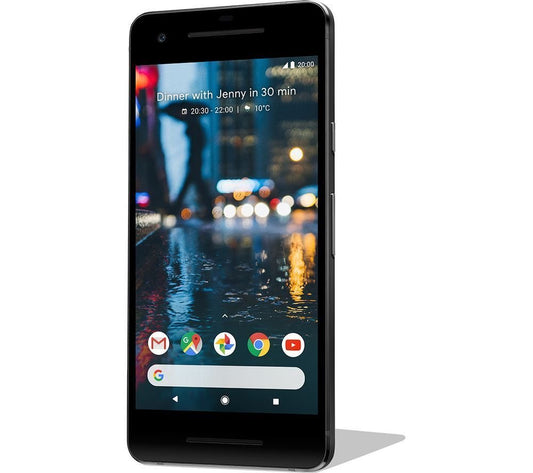Buying a used Android smartphone can be a smart way to save money while still getting a great device. However, it comes with its own set of challenges and risks. To make sure you get the best phone for your needs, you need to consider several factors, from understanding your preferences to finding reliable sellers. This guide will walk you through the steps to help you make an informed decision.
Key Takeaways
- Understand your essential features and budget before starting your search.
- Research and compare different models by reading expert reviews and user feedback.
- Inspect the phone's physical condition, battery health, and screen quality before buying.
- Ensure the phone receives regular software and security updates.
- Choose reputable sellers and platforms to avoid scams and secure a warranty.
Understanding Your Needs and Preferences
Choosing the right used Android smartphone starts with understanding your needs and preferences. This involves identifying the features that are essential for you, considering your budget, and evaluating your usage patterns. Let's break these down further.
Identifying Essential Features
First, make a list of the features you can't live without. Do you need a great camera for travel photos? Or perhaps a large battery for long days without charging? Knowing what you need will help you narrow down your options.
Considering Your Budget
Your budget is a crucial factor. Set a realistic budget and try to stick to it. Avoid the temptation to splurge on a high-end model if a mid-range phone meets your needs. Remember, a good budget phone can often be more than sufficient.
Evaluating Your Usage Patterns
Think about how you use your phone daily. Do you use it mainly for calls and texts, or do you need it for more demanding tasks like gaming or video editing? Understanding your usage patterns will help you choose a phone that fits your lifestyle.
Taking the time to understand your needs and preferences will make the process of choosing a used Android smartphone much easier and more effective.
Researching Potential Models
When looking for a used Android smartphone, it's crucial to research potential models thoroughly. This ensures you get the best value for your money and a device that meets your needs.
Consulting Expert Reviews
The best way to narrow down your options is by consulting expert reviews. Websites like Android Authority provide in-depth reviews that highlight both the strengths and weaknesses of various models. Reviews help you separate the wheat from the chaff and give you a balanced view of what to expect. Remember, ads and marketing materials often exaggerate features, so rely on expert opinions for a more accurate assessment.
Comparing Specifications
Once you have a list of potential models, compare their specifications. Look at key features such as battery life, camera quality, and storage capacity. Here's a simple table to help you compare:
| Model | Battery Life | Camera Quality | Storage Capacity |
|---|---|---|---|
| Model A | 24 hours | 12 MP | 64 GB |
| Model B | 30 hours | 16 MP | 128 GB |
| Model C | 20 hours | 8 MP | 32 GB |
This table can help you quickly identify which models meet your essential criteria.
Reading User Feedback
In addition to expert reviews, read user feedback on platforms like Amazon and eBay. User reviews provide real-world insights into the phone's performance and durability. Pay special attention to comments about battery life and screen quality, as these are common issues in used phones. User feedback can often reveal potential problems that expert reviews might overlook.
Taking the time to research potential models can save you from future headaches and ensure you get a smartphone that truly fits your needs.
Inspecting the Condition of the Smartphone
When buying a used Android smartphone, it's crucial to thoroughly inspect its condition to ensure you're getting a reliable device. Here are the key areas to focus on:
Checking for Physical Damage
Start with a visual examination of the phone. Look for any scratches, dents, or cracks on the screen and body. If the phone has physical keys, test them to see if they're in good condition. Also, check if any of the cameras have cracks or damage. Move to the sides and back to see if there’s any visible damage. If the phone has a removable back, take it off and inspect the battery and other components.
Assessing Battery Health
Battery health is a critical factor in a used phone. Batteries typically maintain up to 80% of their original capacity after about two years of use. Check if the battery has been replaced or if it’s the original one. A worn-out battery can significantly affect the phone's performance and your overall experience.
Verifying Screen Quality
Turn on the phone to check the screen quality. Look for dead pixels and ensure the entire capacitive touch screen works. Make sure to test all buttons again to see if they’re all in working order. Also, test out the camera to ensure it functions correctly.
A thorough inspection can help you avoid future issues and ensure you get a device that meets your needs.
By carefully inspecting these aspects, you can make a more informed decision and avoid potential pitfalls when buying a used Android smartphone.
Ensuring Software and Security Updates
When choosing a used Android smartphone, it's crucial to ensure that the device will continue to receive software and security updates. This not only keeps your phone running smoothly but also protects it from vulnerabilities.
Understanding Update Policies
Different manufacturers have varying policies regarding software and security updates. For instance, Google Pixel phones often receive updates promptly, while other brands may lag. It's essential to know the update policy of the manufacturer before making a purchase.
Checking Current Software Version
Before buying, check the current software version on the phone. This will give you an idea of how up-to-date the device is. You can usually find this information in the settings menu under 'About Phone.'
Evaluating Security Features
Security features are vital for protecting your personal information. Look for phones that offer features like biometric authentication, encryption, and regular security updates and resources. These features can significantly enhance the security of your device.
Ensuring your phone receives regular updates is crucial for maintaining its performance and security. Always verify the update policies and current software version before finalizing your purchase.
Finding Reliable Sellers and Platforms
When buying a used Android smartphone, it's crucial to find reliable sellers and platforms to ensure a safe and satisfactory purchase. Here are some key points to consider:
Exploring Reputable Marketplaces
Several online marketplaces are known for their reliability and user protection. Swappa is a popular choice due to its strict user verification and manual post reviews. Amazon also offers a high level of security, with excellent customer support and a return policy. Gazelle is another trustworthy option, as it buys phones directly from users, inspects them, and then sells them.
Understanding Return Policies
Before making a purchase, always check the return policy of the platform. For instance, Gazelle offers a 30-day return period if you're not satisfied with your purchase. Amazon also provides robust return options, ensuring you can return the product if it doesn't meet your expectations.
Assessing Seller Ratings and Reviews
It's essential to evaluate the seller's ratings and reviews. On platforms like eBay, make sure the seller has a good rating and positive feedback from previous buyers. This can help you avoid potential scams and ensure a smooth transaction.
Always prioritize safety and reliability when choosing where to buy your used smartphone. This will help you avoid issues and ensure a positive buying experience.
Negotiating and Finalizing Your Purchase
Timing Your Purchase
Timing can be crucial when buying a used smartphone. Prices often drop when new models are released. If you have your eye on a specific model, wait until the next version is announced. This can save you a significant amount of money. Additionally, shopping around different retailers can reveal price differences that might surprise you.
Negotiating Price
When negotiating the price, point out any scratches or dents the device might have. These can be solid negotiating points, especially if they are on the screen. You can also mention that you found the device cheaper on other websites. If the seller is unwilling to lower the price, it might be best to walk away and look for another deal.
Securing a Warranty or Guarantee
Before finalizing your purchase, ensure that the phone comes with some form of warranty or guarantee. This can provide peace of mind and protect you from potential issues. If the seller does not offer a warranty, consider negotiating for a lower price to account for the added risk.
Always try to find a point where both you and the seller are comfortable with the terms and price before moving on to the next listing.
Setting Up and Testing Your Used Smartphone
Initial Setup and Configuration
Once you have your used smartphone, the first step is to set it up. Insert your SIM and microSD cards if applicable. Turn on the phone and follow the on-screen instructions to complete the initial setup. Connect to Wi-Fi to download any necessary updates.
Testing Key Features
After the initial setup, it's crucial to test the phone's key features. Make a call, send a text, and connect to the internet to ensure everything works. Check the camera by taking a few photos and videos. Test the audio by playing a song or a YouTube video. Don't forget to check the battery life by using the phone for a few hours.
Transferring Data Securely
Transferring your data securely is the final step. Use a reliable app or service to move your contacts, photos, and other important files. Make sure to back up your data before starting the transfer process.
Setting up and testing your used smartphone thoroughly ensures you get the best performance and longevity from your device.
Conclusion
Choosing the best used Android smartphone for your needs can be a rewarding experience if you follow the right steps. By setting a clear budget, identifying the features that matter most to you, and conducting thorough research, you can find a device that offers great value without breaking the bank. Remember to consult expert reviews, test the phones in person if possible, and compare prices across different platforms to ensure you get the best deal. With careful consideration and a bit of patience, you can enjoy the benefits of a high-quality smartphone at a fraction of the cost of a new one.
Frequently Asked Questions
Why should I consider buying a used Android smartphone?
Buying a used Android smartphone can save you a lot of money. You can get a high-end device at a fraction of the cost of a new one, and it can still meet all your needs.
What should I look for when inspecting a used smartphone?
When inspecting a used smartphone, check for physical damage, assess the battery health, and verify the screen quality. Make sure all buttons and ports work properly.
How can I ensure the used smartphone has the latest software updates?
Check the current software version on the phone and research the manufacturer's update policy. Some brands are better at providing updates than others.
Where can I find reliable sellers for used smartphones?
You can find reliable sellers on platforms like Swappa, Amazon, and eBay. Look for sellers with good ratings and reviews, and understand their return policies.
Is it possible to negotiate the price of a used smartphone?
Yes, you can often negotiate the price of a used smartphone, especially if you notice any minor issues with the device. It never hurts to ask for a better deal.
What should I do after buying a used smartphone?
After buying a used smartphone, set it up and configure it to your preferences. Test all key features and securely transfer your data from your old device.








